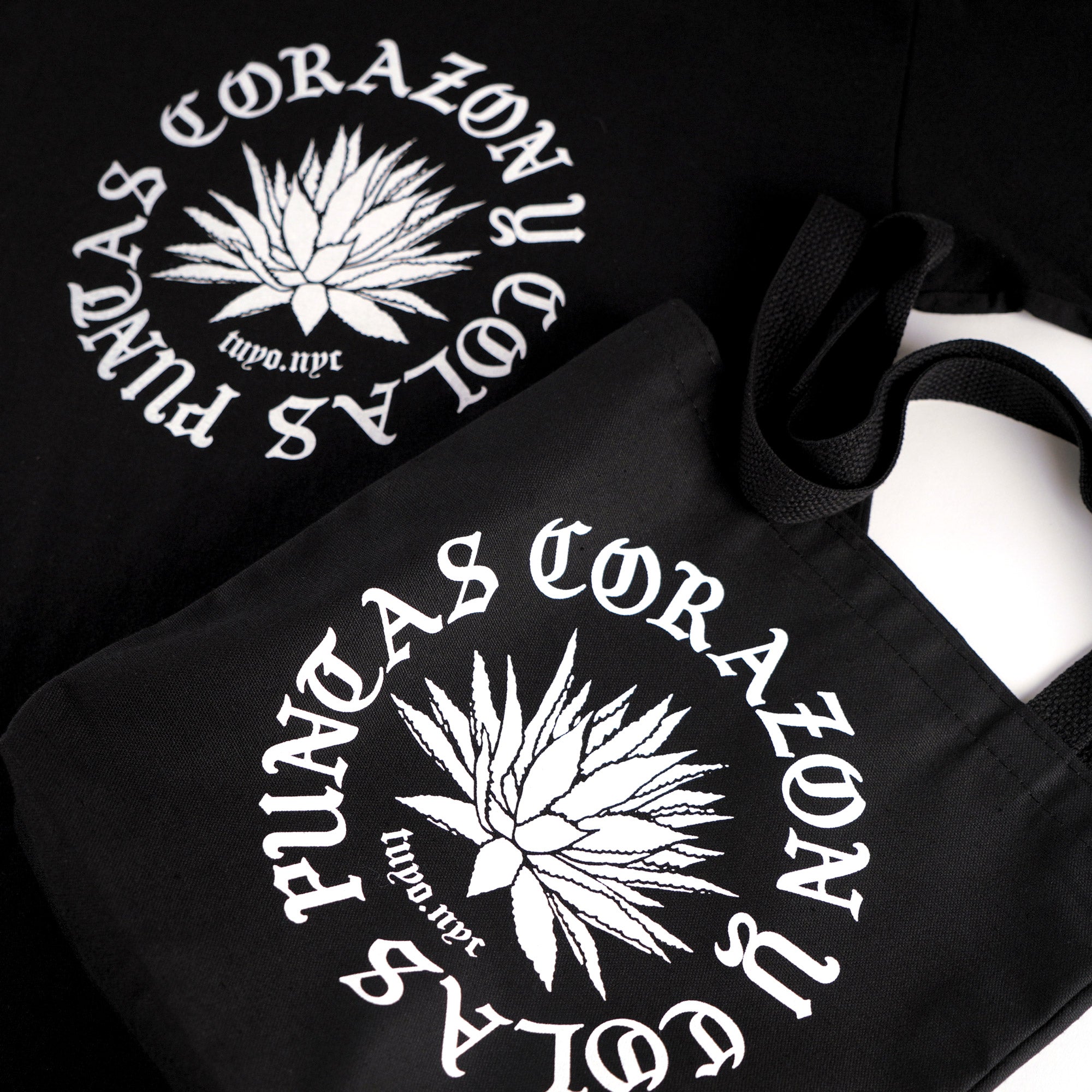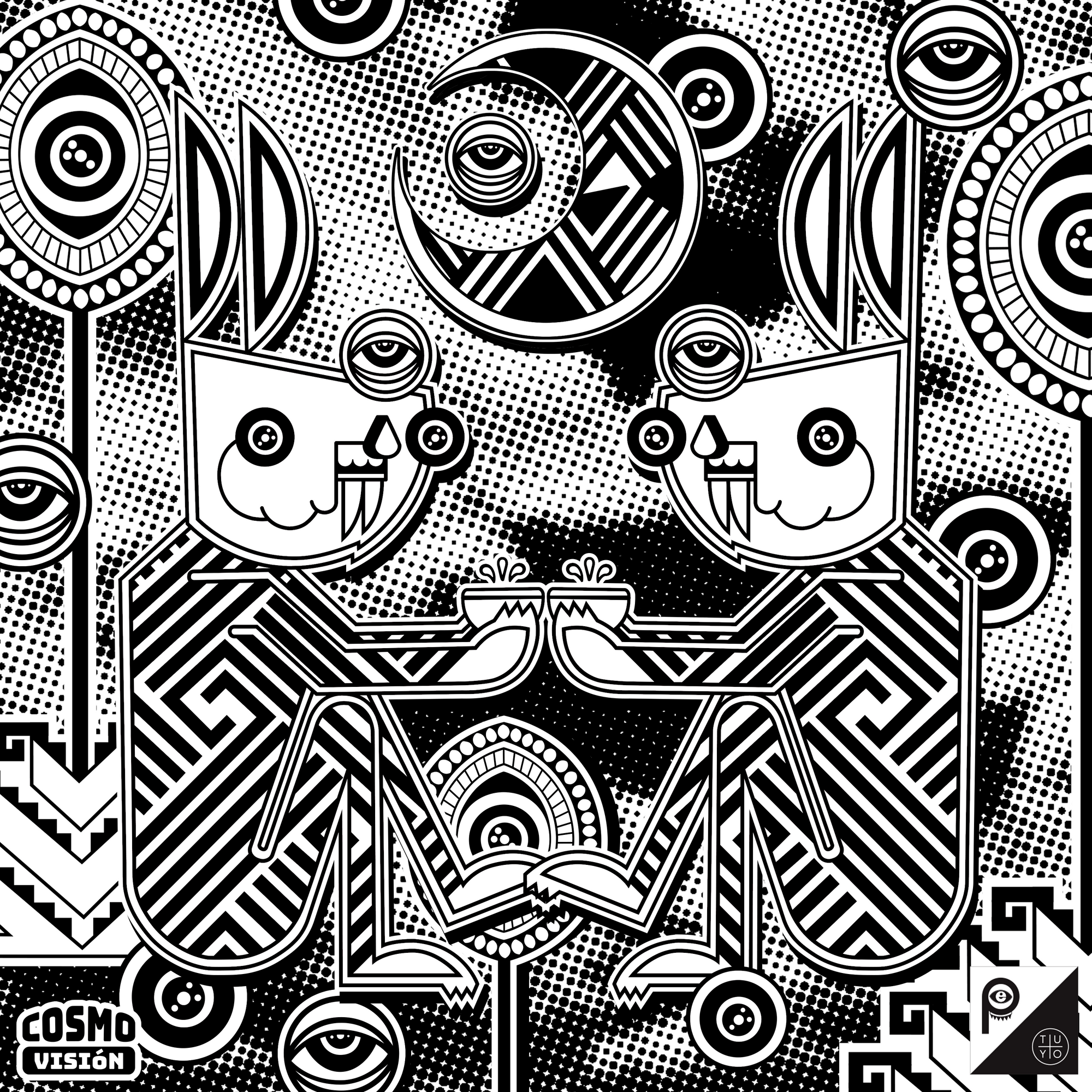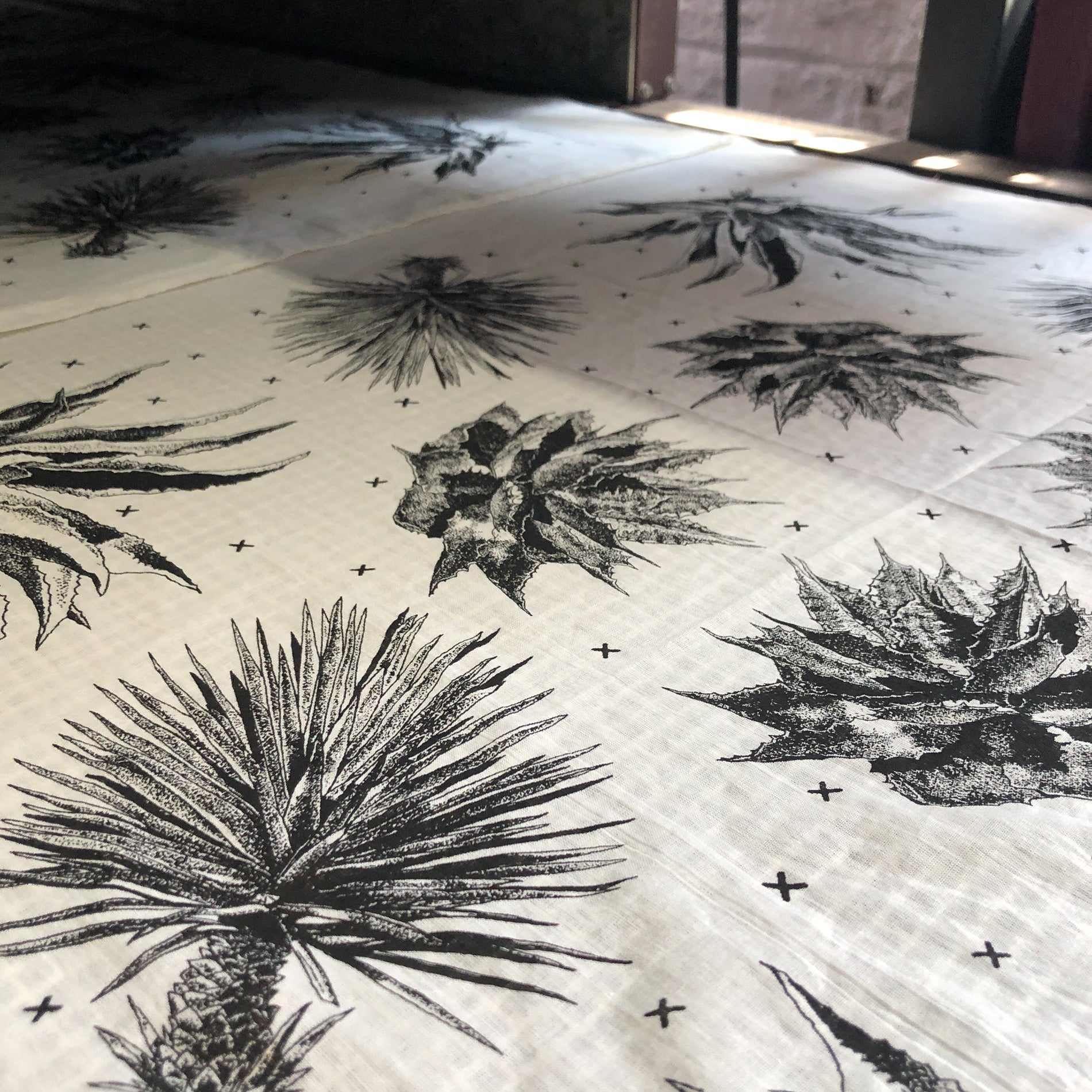Your Cart is Empty
free shipping $300+

Puntas, Corazon y Colas are the Spanish words used to describe the cuts taken during distillation. In English, these cuts are typically called Heads, Heart, and Tails.
Why did we choose these words?
Simply put we are agave nerds, and really love making designs that express our appreciation of these plants and spirits distilled from them. We hope you like them too!
+ All images are from past hey hey agave podcasts. You can click on the image to go to its episode page and learn more about mezcal, agave and the culture that surrounds it. We are so grateful to have had the opportunity to talk with these amazing folks!
A quick explanation of agave distillation:
After the agaves are harvested they are roasted in large earthen pits. A massive fire is made to heat up stones lining the bottom of the pit. When the stones reach the desired temperature the agave pinas are placed inside the oven and covered to retain the heat. The cook can last from 2-7+ days, depending on the environment, the agave species being used and producer's particular preference, style and approach to the cook process.
Once the agave pinas are roasted they are left to rest and cool. The cool time can also vary widely. We have heard of mezcaleros who allow the cooked agaves to sit for weeks before crushing. These decisions play a role in affecting the flavor profile of that particular batch of mezcal. Next the cooked pinas are crushed either by hand, using a tahona (mule-drawn mill), or by machine.
The mash is then placed in barrels and left to ferment. Fermentation is an anaerobic biological process where glorious native yeast convert sugars into ethanol and carbon dioxide. However, yeast are not the only organisms working hard, bacteria(s) are also present and work in different ways to affect the flavor and aromas of the future spirit.
+ We recommend James Schroeder's book: Understanding Mezcal to lean more about how mezcal is made.
In our 2018 interview Patrick Dacy, owner of Duke’s Liquor Box, describes the distilling process for mezcal as follows:
“A still is a large pot that you fill with this agave wine and start boiling it at a low temperature. The vapors that come off your boiling liquid is the spirit, and you have a lid on top that captures that spirit and sends it through a coil and that cools it off which then condenses [the vapor] back into liquid, and then that drips out the other side and that is the spirit.”
“Each time you distill [the liquid] you increase its alcohol content. You take that [first] liquid which is around 25% ABV and put it back into the still and you cook it again and that becomes 50-60% or higher ABV.”
Where the mezcalero decides to make the cuts is one of the most crucial decisions in the distillation process. But before we get to the cuts it's important to note that most distillation is done in two passes. The first distillation typically includes the mosto (fermented agave fibers). In this first distillation the entire batch is collected and the ABV is low, around 25%. A common name for the spirit collected from this first pass is Ordinario.
The agave fibers are removed and the still is cleaned and prepared for the second distillation using the ordinario. This final distillation is where the cuts are made.
The first liquid that comes out is called the heads [puntas], the second part is called the heart [corazon] and the last part is called the tails [colas]. All three parts have different ABV and flavor profiles.
Below is how Jay Schroeder describes the cuts in his book. (The text has been lightly edited for efficiency.)
"Heads [Puntas], which boil away first, usually contain alcohols other than ethanol that are harmful to humans in concentration. Tails [Colas] are taken at the end of the distillation, and contain off and bitter flavors, a lot of water and very little alcohol."
This leaves us with the middle cut or heart [corazon]. The heart is the part that is chemically balanced and contains the most desirable flavors and higher ABV. It’s the job of the mezcalero to know when each part is coming out of the still and when to set it aside.
As with most aspects of mezcal production there are always exceptions, adaptations and alternative practices, thanks to human ingenuity and making use of materials on hand. By no means is there a generic one-size-fits-all model.
For example, in Ejutla a different type of still called a refrescadora or Filipino style still is commonly used in mezcal production. This still is designed to distill to proof in just one distillation or “pass”. Our friend and agave educator Alex Jandernoa describes the refrescadora model as follows:
"Refrescadoras use a stainless steel pot surrounding the copper still as well as rudimentary plates (2-3) inside the still. The pot is constantly filled with cold water causing the distillate to reflux back down and extending the time of the pass from 4 hours to 8. This results in a mezcal which leaves the still in one pass and at around 55-65% abv. A primary cut of the first liquid and a final cut of the last liquid is all that is done. To proof mezcal from a refrescadora Maestros will use water or tell you to drink their 63% masterpiece. This method of distillation has existed in Ejutla for around 350 years as far as I can tell."

Image Link (Left) / Image Link (Right)
A mezcalero checks for the alcohol content by taste and sight. This second technique is done by blowing bubbles in the liquid through a long bamboo straw or with a fife, and analyzing the bubbles or “perlas” to determine the ABV. They are often accurate to the decimal!
You can also measure ABV by an instrument called an alcohol meter. Often times both methods are used in production. Here Rio Chenery from Estancia Raicilla is checking the copper “Gallo” that allows them to measure the strength of the distillate with an alcometer.
It's worth noting that adjusting the spirit to the desired proof is art form in and of itself. This can be done using puntas and colas and/or by using water. Additionally, not all mezcal is adjusted.
Once again, it's the decisions each producer makes in every step of the process that creates these one-of-a-kind expressions.
Now, if you've made it this far, you might be thinking "Sabs and Gabs, why this lengthy explanation to promote a t-shirt and a tote?"! To this we would simply ask: do you even know us?!
We source the shirts from Royal Apparel. They are made from 100% combed ring spun organic cotton. We chose a heavier weight of 5.5 oz because we like how it adds structure to the fit. Royal Apparel describes organic cotton as using 90% less water and greenhouse gases which lessens our environmental footprint. It requires 62% less artificial energy as it relies on nature's own energy to thrive. Additionally, Royal Apparel organic cotton goes through a credible certification process from The Global Organic Textile Standard (GOTS).
Our totes are from Enviro-Tote, a woman-owned, family-run business. Based in New Hampshire, they cut and sew all of their bags on-premise. They have developed efficient cutting and stitching techniques, to prevent as much fabric waste as possible. In fact,all of their standard sizes (our agave totes) are designed to have no fabric waste!
The font used for PCC was created by the artist Benjie Escobar. We love how it expresses his particular style while keeping a hand-drawn feel. Gabs created the agave image and worked with Sabs on the design, scale and placement - which basically means dozens of samples were made, taped on the wall, and hotly debated!
We worked with Classy Screens who are our neighbors in Ridgewood! For the tee, they created a tinted discharge ink that will soften and reveal the natural cotton color over time. This ink is the best because it ages without flaking or cracking by removing the black dye from the cotton. The totes are printed in a standard bright white.
Finally, we want to send a big thank you to our good friend Oscar Leon Bernal, who is the owner of La Loncheria in Bushwick, and was kind enough to let us take some (very flattering) pics of him! We highly recommend visiting Loncheria for their delicious tacos, tortas and of course to sip a few mezcales from their exceptional agave spirits library!


M.
August 01, 2022
The design and tshirt are really nice. Us mezcal nerds love being able to display the beautiful agave for all to see.